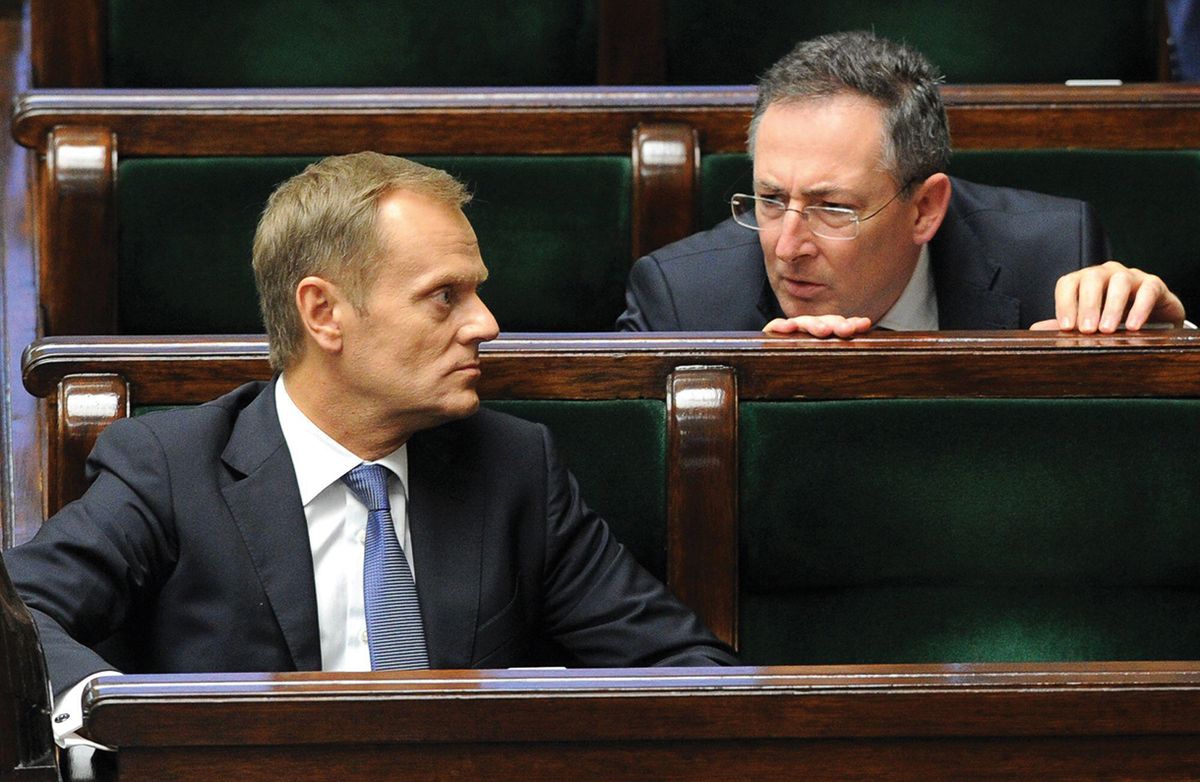In the weeks after the former president of the European Council, Donald Tusk, was sworn in as Poland’s prime minister, his new centrist coalition government wasted little time in unpicking the legacy of almost a decade of right-wing rule. Alongside the headline-grabbing reforms the Tusk government has made to state media, and heated legal and constitutional battles, arts institutions are also feeling the winds of change.
The most prominent developments so far centre on the Zachęta National Gallery of Art in Warsaw, a leading centre of contemporary and Modern art, which also acts as the custodian of the Polish pavilion at the Venice Biennale. On 21 December, the new culture minister, Bartłomiej Sienkiewicz, dismissed Zachęta’s director, Janusz Janowski, who was controversially appointed by the former Law and Justice (PiS) government only two years ago. A week later came the announcement that the culture ministry had replaced Poland’s official selection for the 2024 Venice Biennale, an exhibition by Ignacy Czwartos that had been approved by a jury chaired by Janowski in late October.
Czwartos told The Art Newspaper that he views the cancellation of his project, an exploration of Poland’s “tragic history” between Nazi Germany and Soviet Russia, as an act of “censorship”.
But Joanna Andrusko, a former communications director at Zachęta, says the rapid changes enacted by the Tusk government have triggered a “sense of relief” and “a general atmosphere of hope in the cultural community”. She points out that Czwartos’s exhibition had generated considerable backlash, including from some members of the jury, for being too closely aligned with the PiS government’s right-wing agenda.
In addition to Poland’s participation at the art world’s most high-profile international biennial, the culture ministry is also preparing a reshuffle at one of the biggest sponsors of Polish culture abroad. On 11 January it announced on X that the Adam Mickiewicz Institute, which organises international cultural exchange programmes, will merge with another government entity, the Biuro Niepodległa, whose activities and grants relate to Polish independence. Commentators suggest the merger will pave the way for the legal removal of another PiS appointee, Barbara Schabowska, the director of the Adam Mickiewicz Institute.
Restoring international credibility
The moves indicate a desire on the part of the new government to restore international credibility after years of culture wars, but they also reflect pressure from sections of Poland’s arts community to reverse the interventions of the previous right-wing PiS regime.
Michał Suchora, a gallery owner and spokesperson for Poland’s Zieloni (Greens) party, which forms part of the governing coalition, welcomes the fact the new culture minister dealt “so fast and so efficiently” with the management of Zachęta and the Venice Biennale exhibition, saying it “gives him credibility in the art world”. Suchora is among a number of leading Polish arts figures who are pressing for further changes of leadership at institutions including Warsaw’s Ujazdowski Castle Centre for Contemporary Art and the Muzeum Sztuki in Łódź. New directors were appointed at both museums under the PiS government, provoking widespread consternation in the arts community.
Not everyone, however, is happy with the way the recent changes have been handled. According to Jakub Dąbrowski, a professor at the Academy of Fine Arts in Warsaw, the government was wrong to revoke Czwartos’s selection for Venice.
“Czwartos won a properly conducted competition, and his dismissal, in my opinion, was inconsistent with the law,” Dąbrowski says. “Czwartos’s dismissal undoubtedly gives the impression of censorship, fostering conspiracy theories among PiS supporters and creating right-wing martyrs.”
There is a risk the Tusk government’s actions will fuel a “conservative mythology” that will “be exploited by the right in political conflicts”, Dąbrowski adds. “It is worth sacrificing occasional short-term benefits to gain arguments in the longer perspective.”
Political control of culture
Compared to countries with “arm’s length” arts funding systems, such as the UK, politicians in Poland have always held greater control of leading cultural institutions. Yet culture is rarely a high-profile political issue. Dąbrowski suggests the new culture ministry will therefore be able to push through more policy changes with relative ease.
While the “majority of the Polish art community perceives the eight years of PiS rule as eight years of humiliation”, Dąbrowski points out that the Tusk government’s cultural interventions are far less significant for the rest of Polish society than “the battles currently being fought over the judiciary, public prosecution, public media, and the intelligence services”.
Even so, Andrusko believes the government is “responding to the voices of the cultural community” and is hopeful it will learn from the lessons of the past. She adds that the Polish branch of the International Council of Museums (Icom) is recommending amendments to national legislation which would “aim to ensure greater independence for institutions and to protect them against direct impact from changing political circumstances”.
Echoing the need for new regulations, Suchora says the Greens party is advocating for “open, international competitions for posts such as directors of museums and theatres” to be mandatory in future.
Achieving lasting change, however, will not be easy. The propensity for political interference runs deep, affecting the regions as much as national institutions, says Joanna Wasilewska, the former director of Warsaw’s Asia and Pacific Museum. Her dismissal in September, which sparked protests from international colleagues, was orchestrated by regional politicians from the Polish People’s Party and the Civic Platform, Tusk’s party, not PiS.
“National cultural institutions, directly subject to the ministry of culture, are more visible, particularly for the media, so the public dispute around them is elevated and openly politicised,” Wasilewska says. “However, the majority of museums and other cultural organisations are run by local municipal authorities, and on this level there are lots of stories of political and personal interventions: informal pressures and influences, non-transparent decisions. This is a big challenge indeed, as it does not depend on political opinions. Representatives of all major and local parties can be involved in such practices.”


